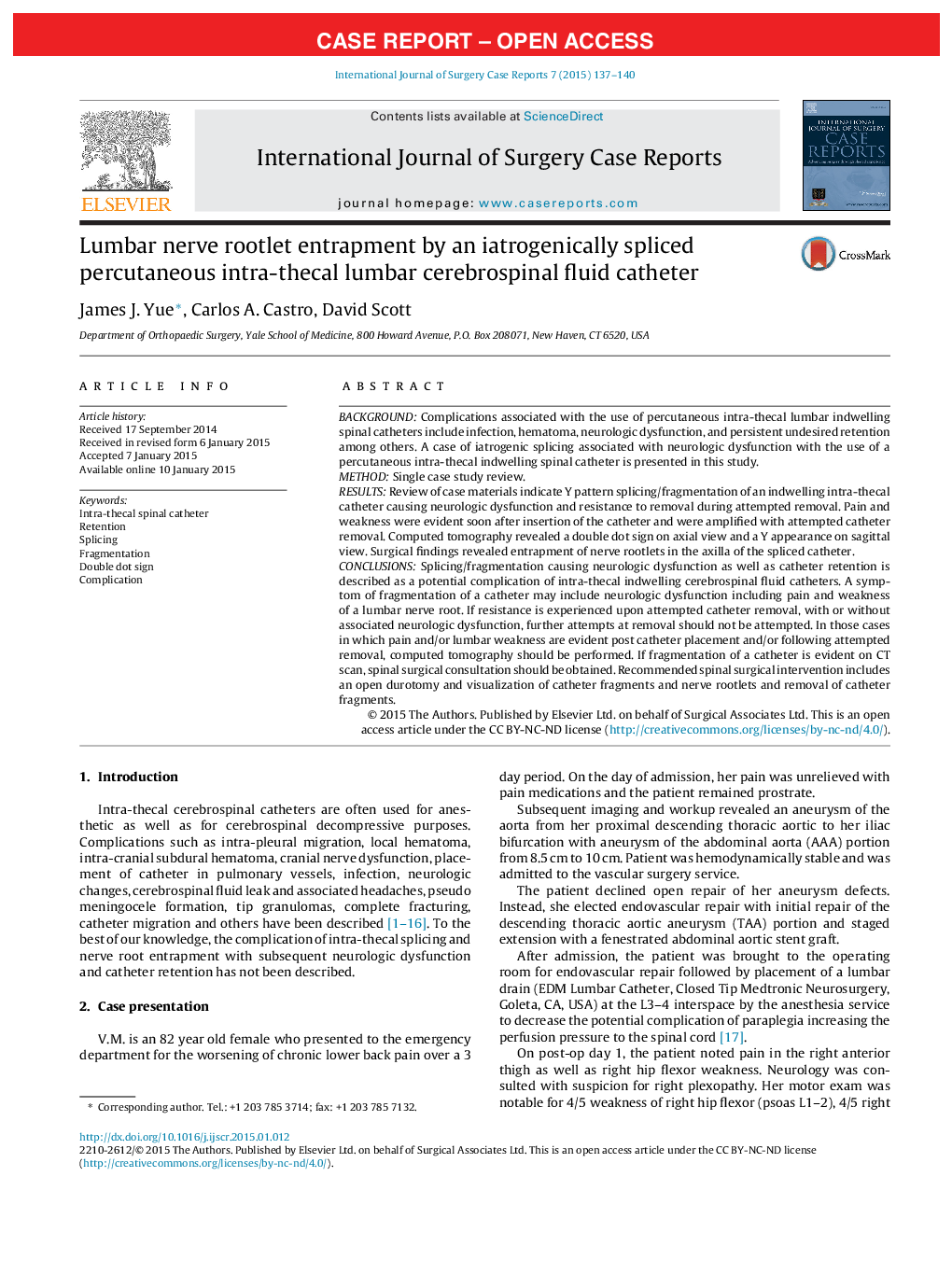| کد مقاله | کد نشریه | سال انتشار | مقاله انگلیسی | نسخه تمام متن |
|---|---|---|---|---|
| 4289145 | 1612108 | 2015 | 4 صفحه PDF | دانلود رایگان |
• Iatrogenic splicing of intra thecal catheter can occur and induce nerve root entrapment.
• Care should be taken not to pull back on catheter or to advance insertion needle during insertion.
• Upon attempted removal if resistance and/or neurologic involvement occurs, removal of catheter should be ceased.
• CT scan findings of a spliced catheter may include a double dot finding.
• Successful catheter removal can be performed with open decompression and durotomy.
BackgroundComplications associated with the use of percutaneous intra-thecal lumbar indwelling spinal catheters include infection, hematoma, neurologic dysfunction, and persistent undesired retention among others. A case of iatrogenic splicing associated with neurologic dysfunction with the use of a percutaneous intra-thecal indwelling spinal catheter is presented in this study.MethodSingle case study review.ResultsReview of case materials indicate Y pattern splicing/fragmentation of an indwelling intra-thecal catheter causing neurologic dysfunction and resistance to removal during attempted removal. Pain and weakness were evident soon after insertion of the catheter and were amplified with attempted catheter removal. Computed tomography revealed a double dot sign on axial view and a Y appearance on sagittal view. Surgical findings revealed entrapment of nerve rootlets in the axilla of the spliced catheter.ConclusionsSplicing/fragmentation causing neurologic dysfunction as well as catheter retention is described as a potential complication of intra-thecal indwelling cerebrospinal fluid catheters. A symptom of fragmentation of a catheter may include neurologic dysfunction including pain and weakness of a lumbar nerve root. If resistance is experienced upon attempted catheter removal, with or without associated neurologic dysfunction, further attempts at removal should not be attempted. In those cases in which pain and/or lumbar weakness are evident post catheter placement and/or following attempted removal, computed tomography should be performed. If fragmentation of a catheter is evident on CT scan, spinal surgical consultation should be obtained. Recommended spinal surgical intervention includes an open durotomy and visualization of catheter fragments and nerve rootlets and removal of catheter fragments.
Journal: International Journal of Surgery Case Reports - Volume 7, 2015, Pages 137–140
